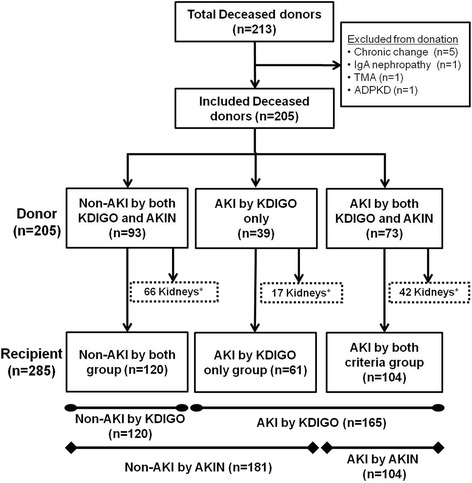Fig. 1.

Patient algorithm and distribution in this study. Out of the 213 DDs, 8 cases were excluded because they were not suitable for kidney donation. The remaining 205 cases were divided into three groups; the non-AKI by both KDIGO and AKIN criteria group, the AKI by KDIGO only group, and the AKI by both KDIGO and AKIN criteria group. Out of the 410 kidneys harvested from these DDs, 125 kidneys were transferred to another institution, and 285 kidneys were transplanted in our institutions. Each KTR also belonged to one of the three groups (the non-AKI by both criteria group, the AKI by KDIGO only group, and the AKI by both criteria group) according to the group of corresponding DDs. TMA, thrombotic microangiopathy; ADPKD, autosomal dominant polycystic kidney disease; AKI, acute kidney injury; KDIGO, kidney disease: improving global outcome; AKIN, acute kidney injury network; KTRs, kidney transplant recipients, DDs, deceased donors. *Transferred to another institution by the rule of organ distribution in Korea
